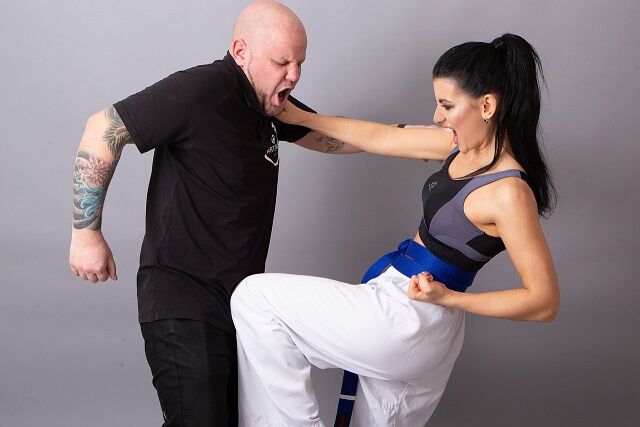Flight, Fight, or Freeze: A Self-Defense Expert’s Guide
As a self-defense instructor with over a decade of experience, I’ve seen firsthand how the human body reacts in high-stress situations. One of the most fascinating aspects of our psychology is the “flight, fight, or freeze” response – a primal reaction that can make or break our ability to protect ourselves in dangerous situations.

I’ll never forget my first real-world encounter with this response. I was walking home late one night when a man suddenly emerged from an alley, demanding my wallet. In that split second, I felt my heart race, my palms sweat, and time seemed to slow down. This was my body’s stress response kicking into high gear, preparing me for action.
So, what exactly is the “flight, fight, or freeze” response? Simply put, it’s our body’s automatic reaction to perceived threats. Rooted in our evolutionary past, this response helped our ancestors survive in a world full of predators and dangers. Today, it still plays a crucial role in how we handle threatening situations.
When we perceive a threat, our body floods with stress hormones like adrenaline and cortisol. These hormones trigger a series of physical changes: our heart rate increases, breathing quickens, and blood flow is directed to our muscles. These changes prepare us for rapid action – whether that’s running away (flight), confronting the threat (fight), or, in some cases, becoming immobile (freeze).
In my classes, I often see students surprised by their own reactions during simulated threat scenarios. Some discover they’re quick to act, while others find themselves momentarily paralyzed. It’s important to understand that none of these responses is inherently “right” or “wrong” – they’re all natural reactions that can be useful in different situations.
“Flight”
The “flight” response often gets a bad rap, but in many cases, it’s the smartest choice. If you can safely escape a dangerous situation, that’s almost always the best option. I’ve had students tell me stories of how their instinct to run likely saved their lives.
“Fight”
The “fight” response, when channeled properly, can give you the burst of energy and courage needed to defend yourself. However, it’s crucial to combine this natural response with trained techniques to make it truly effective.
“Freeze”
The “freeze” response is perhaps the most misunderstood. Many people feel ashamed if they freeze in a threatening situation, but it’s a completely natural reaction. In some cases, staying still can even be advantageous, allowing you to assess the situation or avoid escalating a conflict.
Through my years of teaching, I’ve developed strategies to help students work with their natural responses rather than against them. Here are a few tips:
Understanding the “flight, fight, or freeze” response isn’t just about self-defense – it’s about self-knowledge. By recognizing how our bodies naturally react to stress, we can better prepare ourselves for whatever life throws our way.
In my years as an instructor, I’ve seen countless students grow not just in their physical techniques, but in their confidence and self-awareness. And that, to me, is the true power of understanding our primal responses – it allows us to harness our natural strengths and work on our vulnerabilities, making us safer and more self-assured in all aspects of life.
Remember, whether you run, fight, or freeze, your body is doing its best to keep you safe. Your job is to understand these responses, train wisely, and trust yourself. Stay safe out there!
Certain content that appears on this site comes from Amazon. As an Amazon Associate, we earn from qualifying purchases. Read the full Disclaimer Here!




